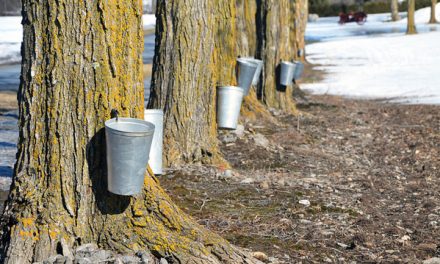Climate change and the effects of it including possible remedies has been ongoing for as long as this current generation has been around.
Currently, Dutch farmers are protesting their government’s plans to cut back on emissions of greenhouse gases to slow down the effects of climate change. They feel that emission restrictions will put them out of business.
Dutch emission policies call for a reduction of 50 per cent of pollutants like nitrogen oxide and ammonia; for the non-farmer, that is what the fertilizer needs to grow most crops gives off as it helps grow the plants.
To show support for the plight, Dutch farmers are in several protests that took place in mid-July in Ottawa, Gatineau, Kingston, Brockville, Bancroft, Casselman, Russell, Smiths Falls, Cornwall and Renfrew County.
The Dutch experience is not the same as the one in Canada, but the potential for a similar negative situation regarding emission policies in Canada is real according to protesters.
The Canadian government like all developed countries coming face to face with climate change has also had to come up with emission restrictions and Canadian farmers are raising concerns about how that will affect how they make their living.
On July 22, the federal, provincial, and territorial (FPT) Ministers of Agriculture reached an agreement in principle for the Sustainable Canadian Agricultural Partnership at their annual meeting in Saskatoon, Saskatchewan.
This five-year agreement will put $500 million in new funds, representing a 25 per cent increase in the cost-shared portion of the partnership. The funding is hoped to enhance economic sustainability, the ministers agreed to improve Business Risk Management (BRM) programs, including raising the AgriStability compensation rate from 70 per cent to 80 per cent.
A statement from Agriculture and Agri-Food Canada said, “Under the cost-shared envelope, they agreed in principle to the $250 million Resilient Agricultural Landscape Program to support ecological goods and services provided by the agriculture sector. The new agreement includes stronger targets such as a 3-5 MT reduction in greenhouse gas emissions, increasing sector competitiveness, revenue and exports, and increased participation of Indigenous Peoples, women, and youth. There will also be a focus on measuring the results of framework investments.
The part of the government’s statement that has farmers concerned is the 3 to 5 million tons reduction in greenhouse gas goals. What that means is a 30-per-cent reduction target in fertilizer emissions. But what that would look like in terms of the real world is still needing to be completely understood.
How that goal will affect farmers, their incomes and food production in general is still something that has not been made clear.
The Ontario Federation of Agriculture, (OFA) has a very clear opinion on Climate change and how the government should deal with strategies to reduce emissions. In a statement from their website the OFA states: “The OFA acknowledges that Climate Change is happening and that it represents a real threat to agricultural production and the livelihoods of Ontario’s farmers. We recognize climate change is a global challenge requiring action and investment from governments, communities, businesses, and individuals. OFA believes that policies, programs, and research initiatives designed to address climate change must be developed with government and society to reduce the causes (mitigation) and to enable farmers to cope with the effects (adaptation) of climate change. Furthermore, we believe that no provincial or federal climate change policies should have the effect of negatively impacting the ability of farmers in Ontario to compete in domestic or international markets.”
The OFA statement went on to say, “We believe that promoting further agricultural emissions reductions in the agricultural sector is best achieved through increasing the adoption of beneficial management practices (BMPs), extending equitable access to high-speed broadband internet, investing in the adaptation of precision agricultural technologies at multiple farm scales, and developing programs that incentivize enhancing the ecological goods and services (EG&S) provided by farming activities.”
The reaction to even greater emission goals in the Netherlands has captured the attention of farmers in Ontario.
Peggy Breckveld president of the Ontario Federation of Agriculture said, “Dutch farmers have been encouraged in a lot of ways, for a long time to grow the agricultural market or industry.”
As a result, their agricultural industry has made them a global export leader.
“What has come about in the last few years is that they have really, as a country started to believe that they have to reduce emissions of different kinds and protect their soil and water, which I think is normal, and all farmers are interested in that, but the changes that have been asked of farmers have been very dramatic. It seems like a country that reclaimed a lot of land from the ocean are now putting back land into nature and flooding land that was farmland for quite a few years. The story of the Dutch desire to being farmers into a kind of discussion about government strategies regarding the agriculture industry has not happened.”
Breckveld feels that a lack of dialogue and discussion between government and farmers has led to the current situation in the Netherlands.
“I do not think they have been part of the discussion, but they have certainly tasked and been forced to be the solution for a long time,” she said.
“Now they are saying to them, we want you to reduce your production basically because you have to reduce your nitrous oxide levels and your production in some case by 47 per cent.”
Breckveld added, “You can reduce some areas, but you cannot reduce 47 per cent. Because of all of those pressures over the years, those Dutch farmers over there who are protesting, many of them feel like they have nothing to lose because they are going to lose their livelihoods anyways.”
She said, “Here in Canada there is also a desire to reduce greenhouse gas emissions and I think both agriculture and government share a common goal actually. We aim for it through best management practices. Things like the 4 R program and investments in our farms.
She said government has changed from it being an absolute, to it being a fertilizer emission target.
“I think that is important. I think it shows they want to work with industry. As farmers we have worked to reduce farming impact on air and water and soil for a long time.”
She admitted that she was concerned that Canadian farmers could be placed in a difficult position.
She said, “Am I concerned that agriculture will be pushed past their limit? Of course, I am concerned, but that is part of the conversation, and we have to keep the conversation lines open. If you want to be able to do this right, that is what you have to do.”
Breckveld said farmers do not always get the recognition they deserve for striving for best practices.
“The emission per the amount of food we grow is a better ratio. It has been improving for many years and we have to keep aiming for that.”
Former dairy farmer Willyan DeJong owner of DeJong Welding and Repairs in Chesterville said he is very concerned about what is going on in the Netherlands.
Years ago, he transitioned his farm from dairy to cash cropping. He expanded his welding business into a successful operation, but his farmers hat is always nearby.
He has been watching what is happening from a distance because as a farmer he is affected by whatever environmental regulations the government creates.
“In the last 20 years, the government has made the farmers invest heavily in equipment and facilities to try and mitigate some of these emissions,” he said.
“Farmers have spent millions of dollars, but in the end,
it has not worked and now the government wants farmers to give up more.”
DeJong said he hopes that common sense and honest discussion and compromise will be part of any debate about emission targets in Canada.
He said he did not want to see what is happening in the Netherlands happen in Ontario.
Ontario concerned about emission goals
A press release from Lisa Thompson Ontario’s Minister of Agriculture, Food and Rural Affairs after the meeting in Saskatchewan stated that she was disappointed in the federal government’s approach to imposing fertilizer emission reduction targets when the world is struggling with food security.
She said, “As our farmers work to feed Canada and the world, we need to work with them and support their ongoing efforts to grow and produce the food we need. The federal government needs to be true partners, rather than simply imposing targets that make it harder.”
When provincial agricultural ministers at the meeting discussed the fertilizer emissions, they were disappointed by the lack of flexibility and consultation regarding the federal target.
Thompson said, “Our farmers are dealing with significant and complex issues right now. I hope that the federal government will work with us and our farmers to support and recognize the great strides that they are making as responsible stewards.”
Marie-Claude Bibeau, federal Minister of Agriculture and Agri-Food said after the meeting, “The path forward leverages regional strengths and diversity to rise to the climate change challenge, support Canadian producers, capture new markets and meet the expectations of consumers at home and abroad. Our discussions this week, and plans for the future, will build off the great work farmers and processors already do. Our ambitious vision, collaborative spirit, and future additional investments will help the sector go even further.”
The Ontario Ministry of Agriculture, Food and Rural Affairs, (OMAFRA) works with Ontario farmers on the adoption of best management practices and implements programs that promote environmental stewardship as well as practices that enhance yields which contributes to food security.
An OMAFRA spokesperson said regarding Ontario’s relationship with the use of fertilizers: “Farmers in Ontario know the importance of good stewardship of the environment, and are involved in various programs such as the 4Rs Nutrient Stewardship science-based program. They are leaders in innovation and in implementing sustainable practices, ensuring the right fertilizer source, applied at the right rate, at the right time, in the right place.”
The ministry supports the Fertilizer Canada’s 4R Nutrient Stewardship Program. This science-based program helps farmers understand how efficient fertilizer application improves profitability while reducing nutrient losses into the environment, which help to improve water quality outcomes and reduce emissions.
“We continue to partner with farmers to support the strides they are taking as responsible stewards through initiatives such as over $12.5 million committed through the Lake Erie Agricultural Demonstrating Sustainability program, as part of the Canadian Agricultural Partnership, which has been used to support over 1,220 projects to reduce phosphorus in waterways.”
The agriculture and agri-food value chain continue to be an economic engine driving Canada’s economy, contributing nearly $135 billion of national GDP, and responsible for more than 2 million jobs (1 in 9 jobs) in Canada.
Exports of agriculture and agri-food products continue to grow, worth over $82 billion in 2021, compared to $74 billion in 2020.
The next Annual FPT ministers’ meeting will be held in Fredericton, New Brunswick in July 2023.













